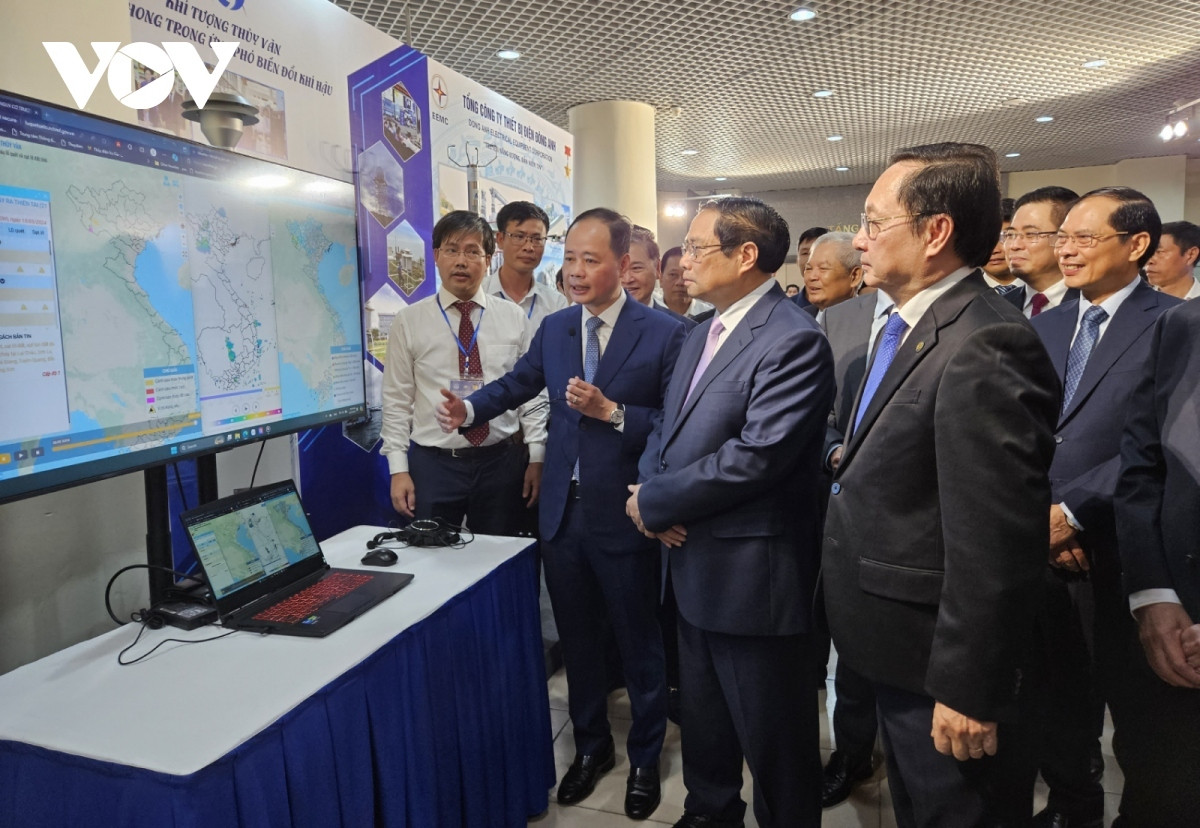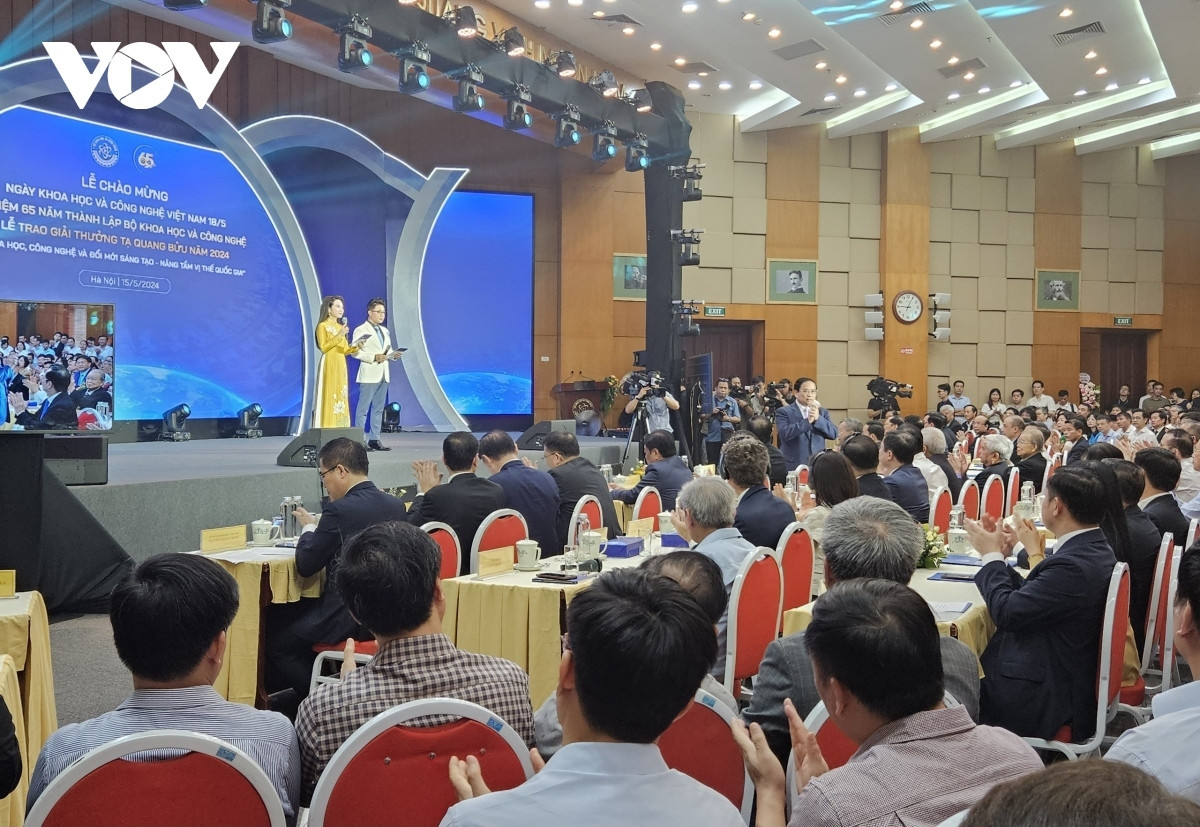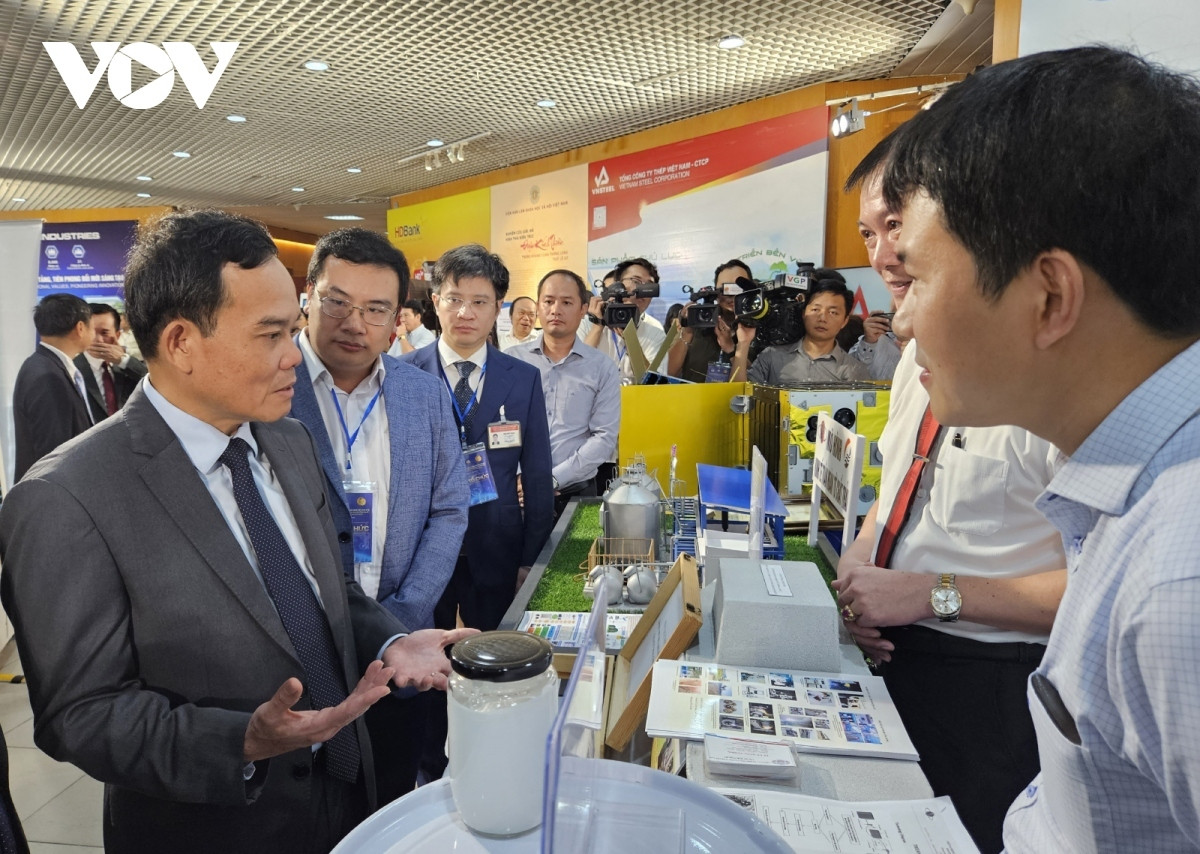

Prime Minister Pham Minh Chinh attended a ceremony on May 15 to celebrate Vietnam Science and Technology Day on May 18 and the 65th anniversary of the establishment of the Ministry of Science and Technology back in 1959.
Those in attendance at the event also included Deputy Prime Minister Tran Luu Quang, leaders of ministries, departments, central agencies, and localities, as well as representatives of international organisations, political and social organisations, businesses, and media agencies.
The role of science and technology and innovation is always affirmed in the documents of Party congresses.
Through a comprehensive and synchronous legal system focusing on science and technology with eight specialised laws, the Party's major guidelines and policies on science and technology development have gradually come to life, thereby creating the basis and premise for innovation and reform in management, organisation and science and technology activities. This therefore meets the requirements of the economy during the transition process and international integration requirements.
Greater investment in science and technology, especially investment by enterprises, marks an important shift towards socialisation. Previously, expenditure was mainly from the State budget, but now the proportion is nearly equal at 52% and 48%.

Progress has been seen in state management of science and technology activities and innovation; the potential for science and technology development; intellectual property; quality measurement standards; along with atomic energy, radiation, and nuclear safety.
Furthermore, State management of public services in the areas under the Ministry's management has recorded plenty of important achievements.
Some fields of natural science have reached an advanced level in the region and the world, with many modern scientific and technological achievements being quickly and widely applied in the fields of health, agriculture, industry, information, and construction.
In the field of agriculture, science and technology contributes over 30% of added value in terms of agricultural production and 38% in the production of plant varieties and livestock, thereby making an important contribution to increasing the added value of many agricultural products and bringing in high profits.
In relation to the industrial sector, the value of high-tech products and technology applications increased from 26% in 2010 to over 40% in 2019.
The nation has mastered technology and successfully manufactured new equipment, production lines, and types of materials with high localisation rates, serving the development of mechanical engineering, energy, support industries, and agriculture.
In the field of transportation, there have been strong research results recorded relating to technology, materials, new technical solutions, mechanics, manufacturing, the localisation of laboratory equipment and testing, in addition to a high level of automation.
In the medical field, the country has mastered many advanced technologies and techniques in diagnosis and treatment such as laparoscopic surgery, especially laparoscopic surgery techniques in the treatment of some diseases and organ transplantation, thereby opening up life opportunities for thousands of patients and bringing greater socio-economic benefits.

The national creative startup ecosystem has been strongly developed in localities nationwide. In 2023, the country had around 3,800 innovative startups, including 11 valued at over US$100 million, 208 investment funds, 84 incubators, and 35 business promotion organisations.
The Vietnamese Global Innovation Index (GII) has continuously improved over the past 13 years, thereby showing its effectiveness in converting input resources into innovative outputs.
In 2023, the country ranked 46th among 132 economies, four in Southeast Asia to maintain second position in the group of 36 low-middle income economies.
The Ministry of Science and Technology has released the Provincial Innovation Index (PII) and officially deployed it nationwide from 2023.
This is a tool aimed at measuring the innovation capacity and results of each locality, thereby contributing to improving the national innovation index and building and implementing policies aimed at promoting socio-economic development based on science, technology, and innovation.
For science and technology and innovation to truly be a strategic breakthrough and the main driving force for further socio-economic development, making Vietnam a developing country with a high middle income by 2030 and a developed country with high income by 2045, it is necessary to continue to persistently innovate thinking. This is along with synchronously implementing large groups of solutions on developing the national innovation system over the following years.
Other efforts include innovating science and technology management mechanism; improving the level of science and technology; promoting the development of a creative startup ecosystem; and strengthening international cooperation and integration in science, technology, and innovation.
PM Chinh also attended an exhibition featuring a 65 year innovation path and books on science, technology, and innovation; 10 years of Ta Quang Buu Award; and visited a booth showcasing science, technology, and innovation achievements.
VOV